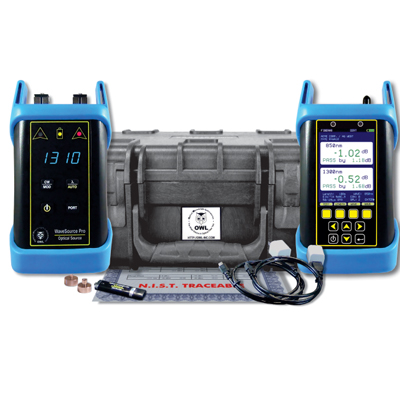Essential Functions to Try To Find in Optical Fiber Testing Equipment
When assessing optical fiber screening tools, numerous vital functions necessitate cautious consideration to make sure optimum performance and reliability. Compatibility with existing market requirements improves capability, while innovative dimension abilities, consisting of TDR and OTDR testing, deal vital understandings into network stability. Understanding these functions will certainly lose light on just how to select the appropriate equipment for your particular demands.
Precision and Precision
Precision and accuracy are essential criteria in the examination of optical fiber testing equipment. These two attributes make sure that dimensions mirror real performance of fibre optic systems, which is vital for reliable network setup, maintenance, and troubleshooting. Accuracy refers to the distance of a measured value to the actual worth, while precision represents the repeatability of measurements under the same conditions.
When picking optical fiber screening devices, it is important to consider tools that give high precision and precision to lessen errors in information analysis. Tools such as optical time-domain reflectometers (OTDRs) and power meters need to have calibration devices to guarantee constant efficiency over time. Additionally, the specs provided by producers need to information the tools's dimension unpredictability, which straight influences the reliability of examination results.
Moreover, the efficiency of optical fibre screening devices can be affected by ecological elements, such as temperature and humidity. Picking tools designed to reduce these variables will boost measurement integrity. In final thought, buying optical fibre testing tools with durable accuracy and accuracy attributes is basic for keeping optimum network efficiency and guaranteeing the integrity of fibre optic communications.

User-Friendly User Interface
The efficiency of optical fiber screening equipment is not solely identified by its accuracy and precision; an user-friendly interface plays a significant duty in improving functional efficiency. A well-designed user interface streamlines the interaction in between the professional and the equipment, permitting a more user-friendly understanding of complicated features.
Key functions of an easy to use interface include clear navigating menus, rational formats, and conveniently available controls. These elements make it possible for service technicians to execute examinations quickly without substantial training, decreasing the chance of user error - ofda. Visual signs such as progress bars, notifies, and visual representations of information can dramatically boost the individual experience by supplying prompt responses on the testing process.
In addition, customizable setups can even more streamline operations by permitting individuals to change parameters according to specific screening needs. This versatility not only saves time but likewise makes sure that the devices satisfies varied application requirements.
Including assistance functions, such as tooltips and extensive guidebooks, into the interface can better encourage individuals, promoting self-sufficiency and confidence in running the equipment. Eventually, a straightforward interface is vital for taking full advantage of the capacity of optical fiber screening tools, causing extra reliable and reliable screening outcomes.
Portability and Sturdiness
Transportability and resilience are important attributes of optical fiber screening equipment, ensuring that it can hold up against the rigors of various settings while staying easy to transportation. Service technicians commonly operate in diverse setups, from telecommunications centers to remote setups, making it essential that testing tools are light-weight and small (ofda). Equipment made with portability in mind typically features ergonomic manages and situations that help with effortless movement, therefore improving operational efficiency on-site
Sturdiness is similarly vital, as optical fiber testing devices is frequently subjected to harsh conditions, including temperature changes, moisture, and visit physical influences. Devices constructed with rugged materials such as strengthened plastics or metal real estates are better matched for these environments, lessening the risk of damages throughout usage and transportation. Furthermore, devices with water and dirt resistance rankings, such as IP rankings, click for source guarantees trusted efficiency in challenging problems.
Compatibility With Criteria
Making sure compatibility with market standards is important for optical fibre testing devices, as it directly influences the reliability and validity of test outcomes. Optical fiber networks go through rigorous performance criteria developed by different companies, including the Telecommunications Sector Association (TIA) and the International Electrotechnical Compensation (IEC) Testing tools must abide by these standards to ensure that measurements correspond and equivalent across different systems and settings.
When picking optical fiber testing devices, users need to verify that the gadget meets relevant standards important to their details application, such as those relevant to depletion, transmission capacity, and crosstalk. Tools that is compliant with well established requirements not only aids in attaining precise results yet additionally facilitates interoperability amongst gadgets from different makers.
In addition, compatibility with standards makes certain that the devices can be made use of in regulatory conformity circumstances, which is essential for tasks in sectors such as telecoms, aerospace, and army applications. Consequently, buying optical fibre screening devices that straightens with existing market criteria is a basic element of keeping quality control and accomplishing optimal network performance.
Advanced Dimension Capacities
Advanced dimension abilities are a specifying function of modern optical fiber testing equipment, enabling comprehensive evaluation of network efficiency. These capabilities make published here sure that professionals can review crucial criteria such as signal loss, diffusion, and transmission capacity, which are essential for preserving optimum interaction effectiveness.
One secret element is the capacity to conduct time-domain reflectometry (TDR) and optical time-domain reflectometry (OTDR) examinations. These methods make it possible for users to recognize mistakes, gauge the size of fibers, and determine the place of flaws with remarkable accuracy - ofda. Additionally, innovative devices frequently includes the capability to determine optical power levels, helping to evaluate the total health of the network and ensure conformity with the needed specs.
In addition, some screening gadgets supply advanced formulas for real-time evaluation, allowing quicker diagnosis and troubleshooting. This is particularly vital in high-speed networks where downtime can cause significant financial losses. With the assimilation of advanced software interfaces, customers can picture information better, helping with notified decision-making. To conclude, purchasing optical fibre testing tools with innovative dimension abilities is vital for ensuring network dependability and efficiency in today's demanding telecommunications landscape.
Conclusion
